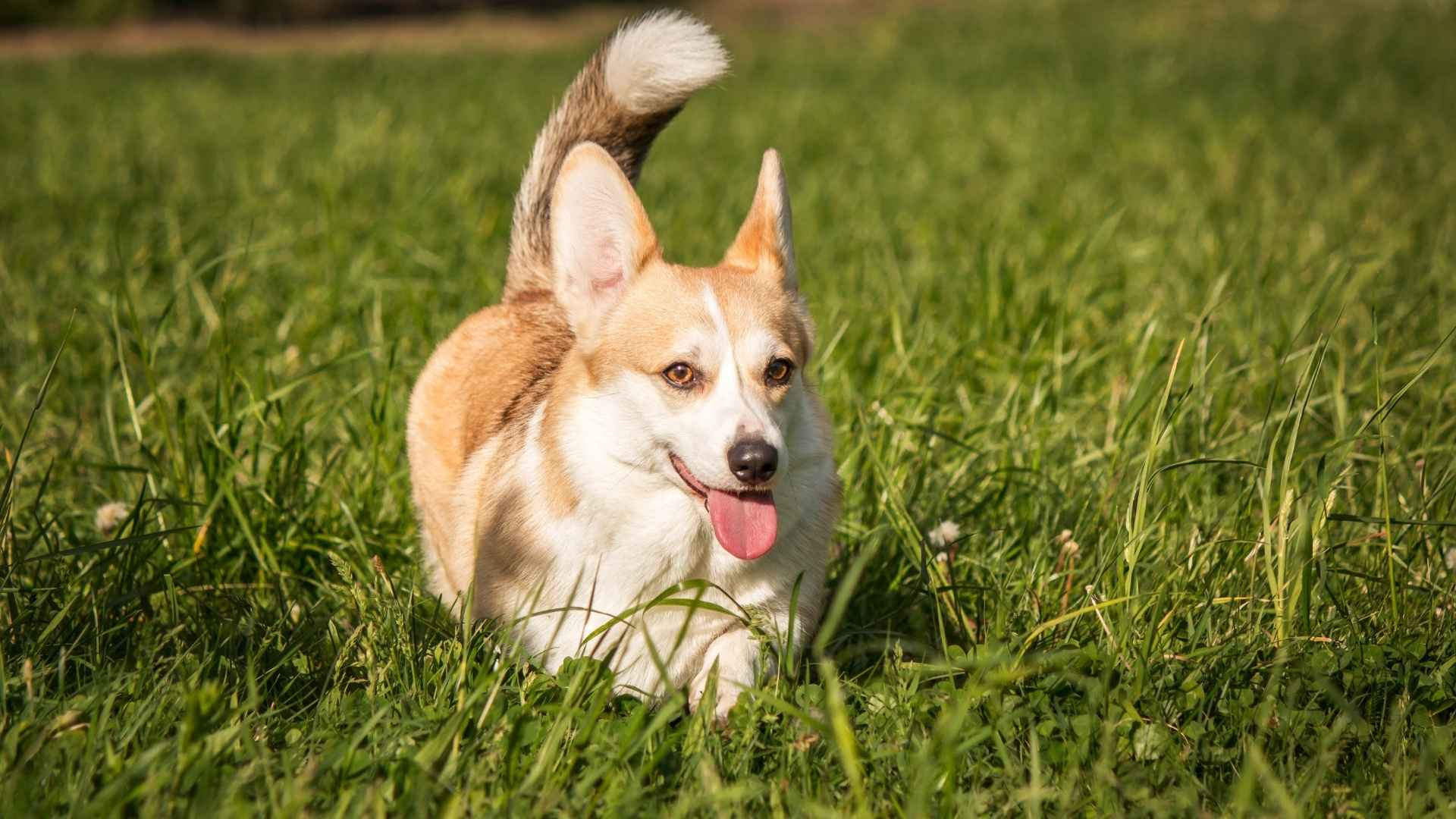There is nothing quite like the joy of coming home to a dog that is wagging its tail with unbridled enthusiasm. Some breeds are naturally more exuberant than others, and their tail wags can be downright contagious.
Whether you are looking for a furry friend to brighten up your daily routine or simply want a companion that embodies the spirit of playfulness, certain dog breeds are sure to capture your heart.
From puppies to adult dogs, some breeds retain that newborn pup-like excitement, wagging their tails whenever they see their favorite people or toys.
According to PetMD, tail wagging is more than just a cute gesture; it is a way for dogs to convey their emotions and intentions. By paying attention to the speed, movement, and context of a dog’s tail wag, you can better understand what kind of interaction your dog is attempting to have.
In this article, we will explore some of the dog breeds that are famous for their enthusiastic tail wags. We will dive into their characteristics, temperaments, and what makes them perfect companions for families and individuals alike.
Dog Breeds That Wag Tails Excitedly Like Newborn Pups
1. Labrador Retriever
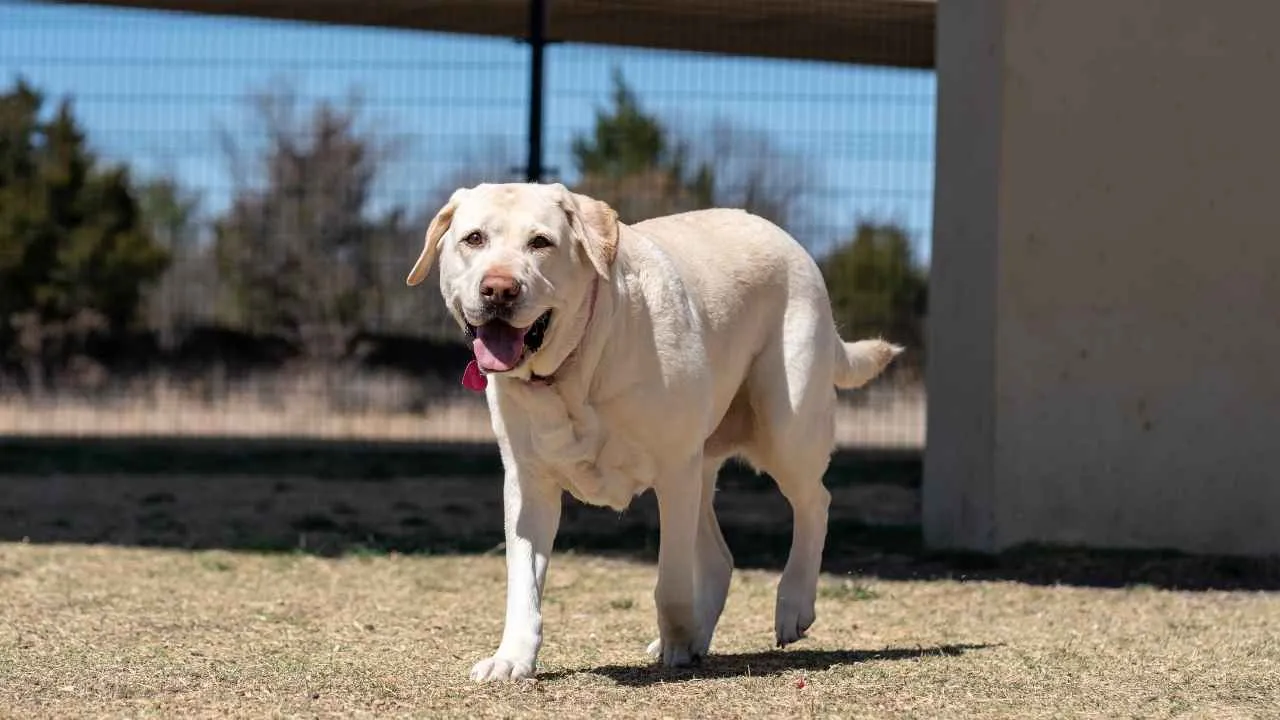
You know how sometimes we wish our dogs could just talk to us? Well, it turns out they are actually pretty great communicators, and their tails are a huge part of it.
According to the American Kennel Club, a tail wagging can tell us a lot about how they are feeling. Labrador is one breed that loves to wag its tail, and it is adorable.
Lab wags its tail super fast and wide when it is excited or happy, and it’s like their entire body is saying, “I am so stoked to see you.” Its tail can convey confidence, enthusiasm, and friendliness, making it a joy to be around.
Whether greeting at the door or playing fetch, a Labrador’s wagging tail is a sure sign of their joyful personality.
2. Golden Retriever
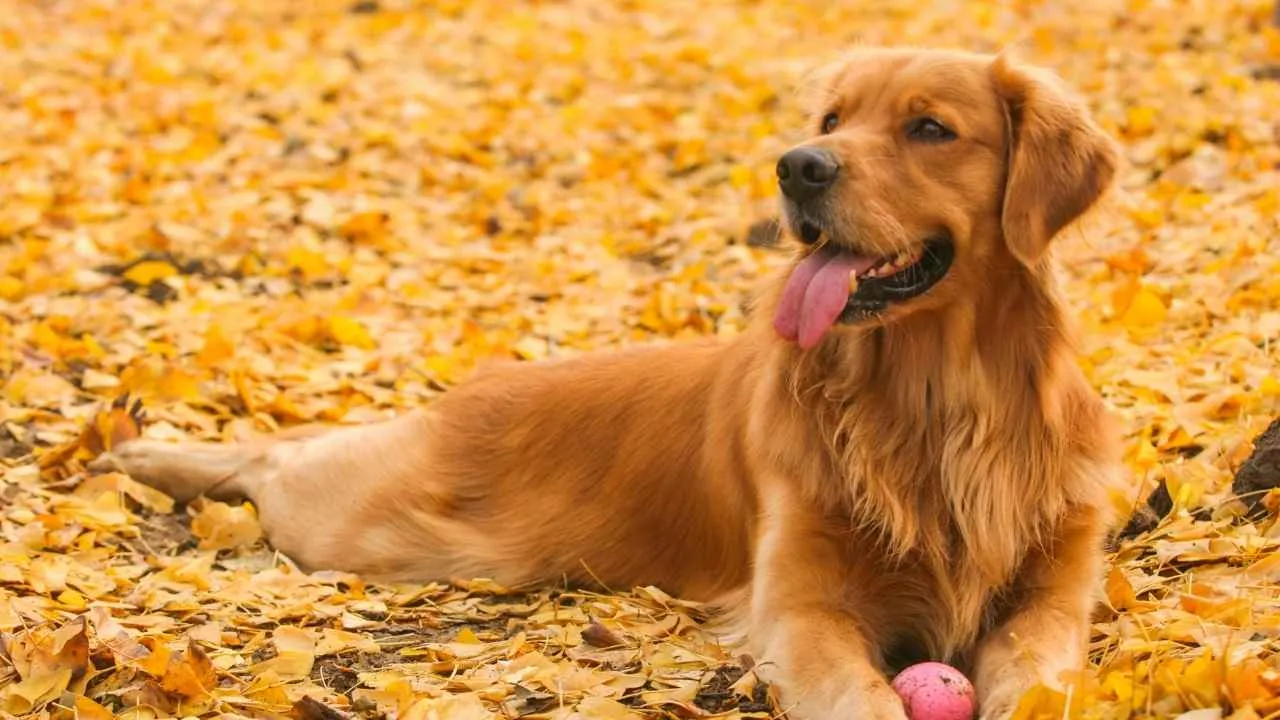
Golden Retriever is an adorable bundle of energy, pup! One of the most recognizable features of Golden Retrievers is their enthusiastic tail wagging.
There is always something its wagging tail means that your canine partner tries to say. A fast wag means it’s stoked, while a slow wag means it’s feeling a bit meh. In fact, the whole body language matters too; if it’s stiff and its ears are back, it might be feeling worried or pretty stressed out.
Golden Retriever thrives on physical affection and loves being around people. It’s a total cuddle bug. By regularly interacting and paying attention to its cues, you can build a strong bond with your Golden Retriever and understand what it is trying to tell you.
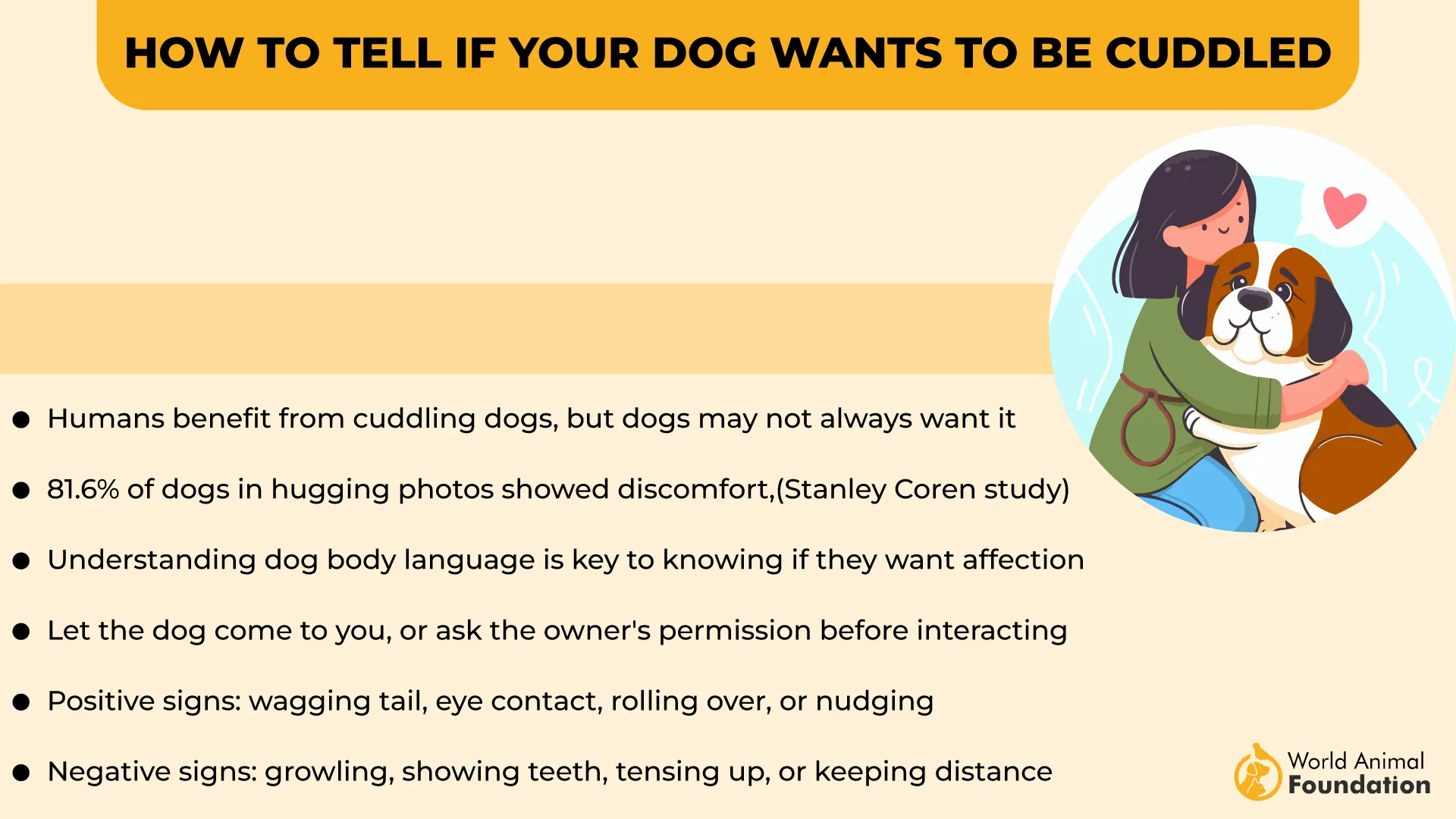
With time and patience, you will be a pro at reading its tail language and body language, and your bond will grow stronger. It’s a win-win.
3. Beagle
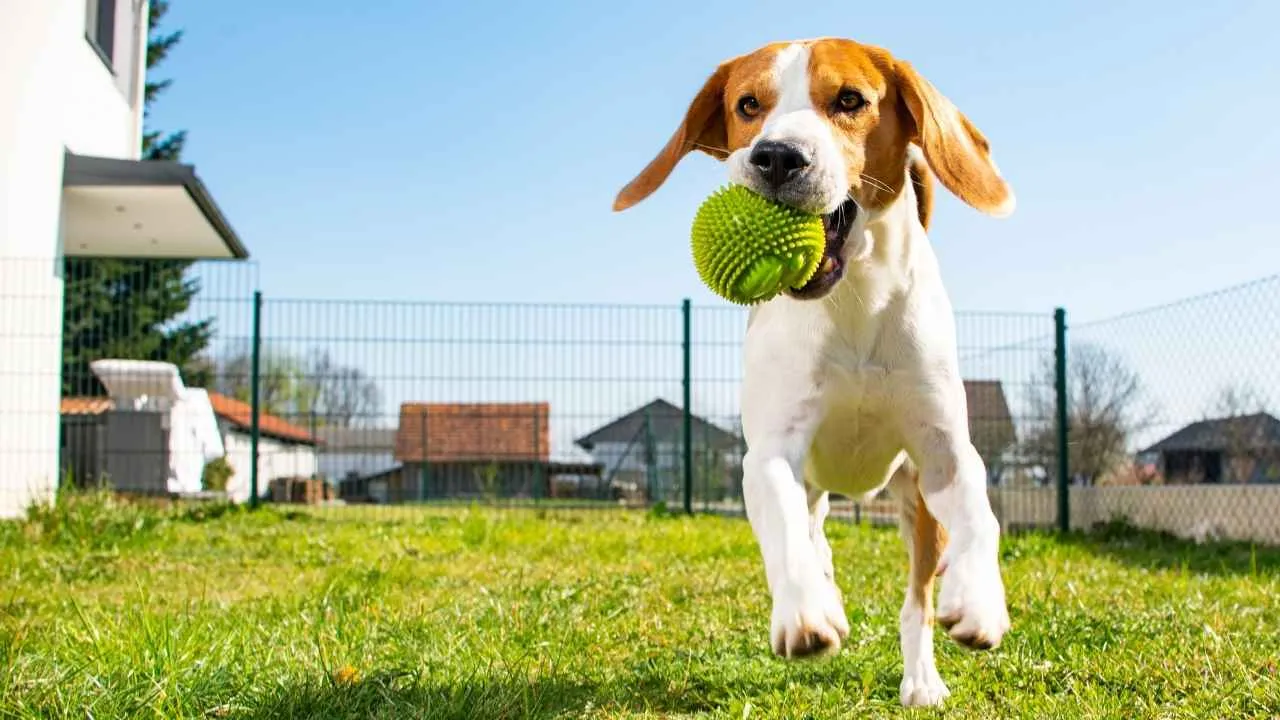
So, have you ever noticed how your dog wags its tail? It’s not just a simple movement; it can mean all sorts of things.
For a Beagle, a straight tail with a fast wag usually means they are super excited. But if it is slow and gentle, they might be just curious. When you pet your Beagle or give it a treat, just notice that its tail wag becomes more energetic.
Also, the direction of wag is meaningful; if it is more to the right, your dog is probably feeling pure joy, but when it is more to the left, your dog might be feeling anxious. By observing these cues, you can better understand what your canine is trying to tell you.
It’s like having a conversation with your children, and it’s really helpful to understand their emotions and create a lasting bond with your pet.
4. Boxer

Boxer is known for their boundless energy, charming personalities, and loyalty. Tail position and tail movements reveal a dog’s emotions.
Its behavior and antics often reveal a quirky side that may find it irresistible. A boxer’s tail is moderately long, tapering to a point, and set high on the hindquarters. When relaxed, it hangs down in a natural curve, but when alert or excited, a boxer carries their tail upward in a joyful arc.
In addition to tail talk, Boxers also communicate through body position and facial expressions. Observing its non-verbal cues can give you a more complete picture of your Boxer’s emotional state.
For example, a relaxed Boxer might have a soft, open mouth and calm demeanor, while a stressed Boxer might exhibit panting, pacing, or avoidance behavior.
This understanding will help you create a more comfortable environment for your pet, both as a dog trainer and owner.
5. Pembroke Welsh Corgi

The Corgi is a delightful breed known for its charming personality and adorable features. One of the most endearing traits is its signature “wiggle butt,” which is sure to bring a smile to anyone’s face.
When excited, a Corgi’s whole back end gets moving, showcasing its happiness. Its tail wags with enthusiasm, adding to its energetic and playful demeanor.
Corgi is also a vocal dog, using a mix of barks, grumbles, and “talks” to communicate with their owners. Corgis can be quite hilarious when they seem to “answer” questions or comment on their owners’ actions.
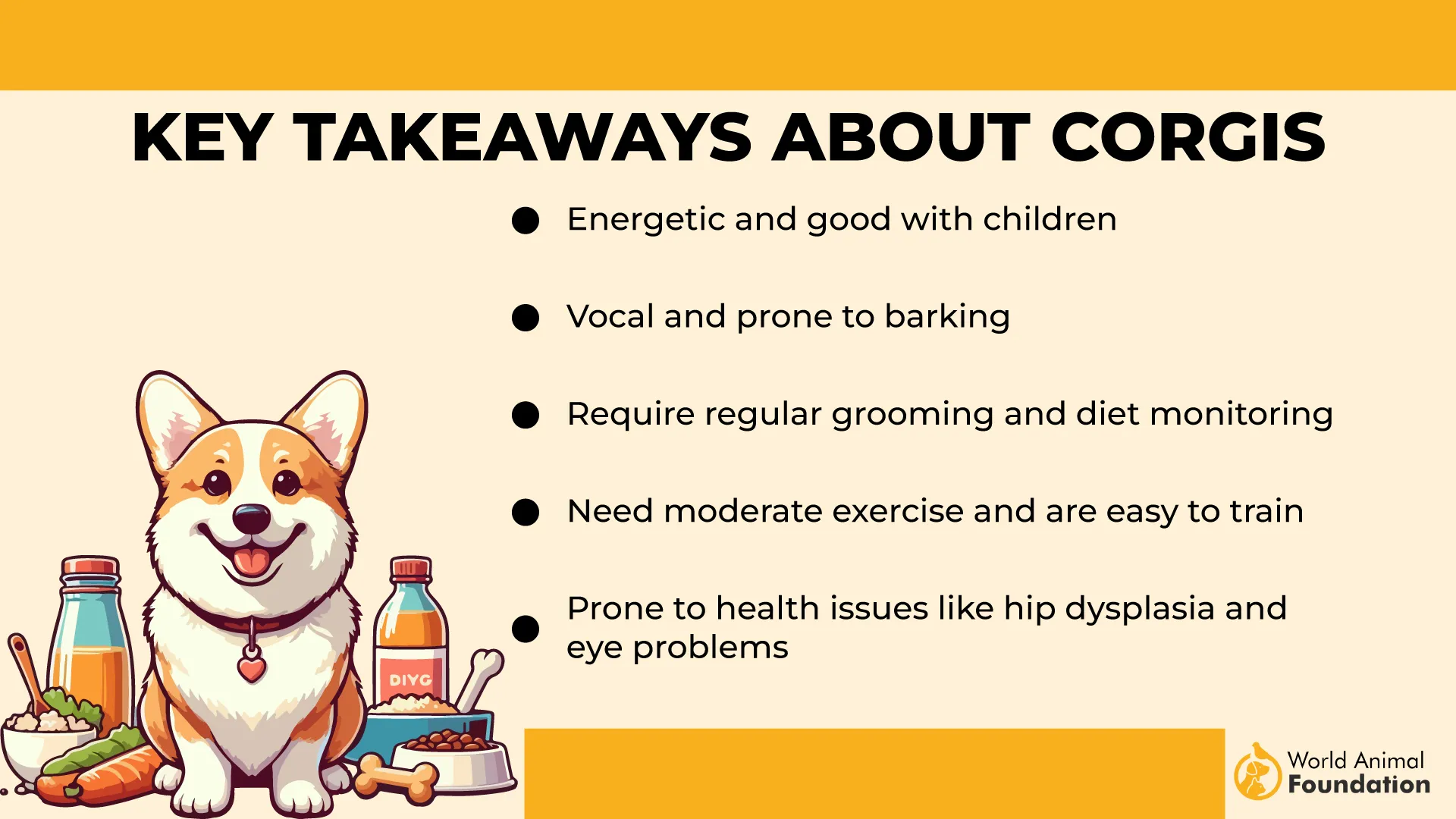
With its tiny legs and round, fluffy behind, the Corgi is a true delight. Its ability to spread joy with its simple movements makes it a beloved companion for many.
The Corgi’s charm is undeniable.
6. Australian Shepherd
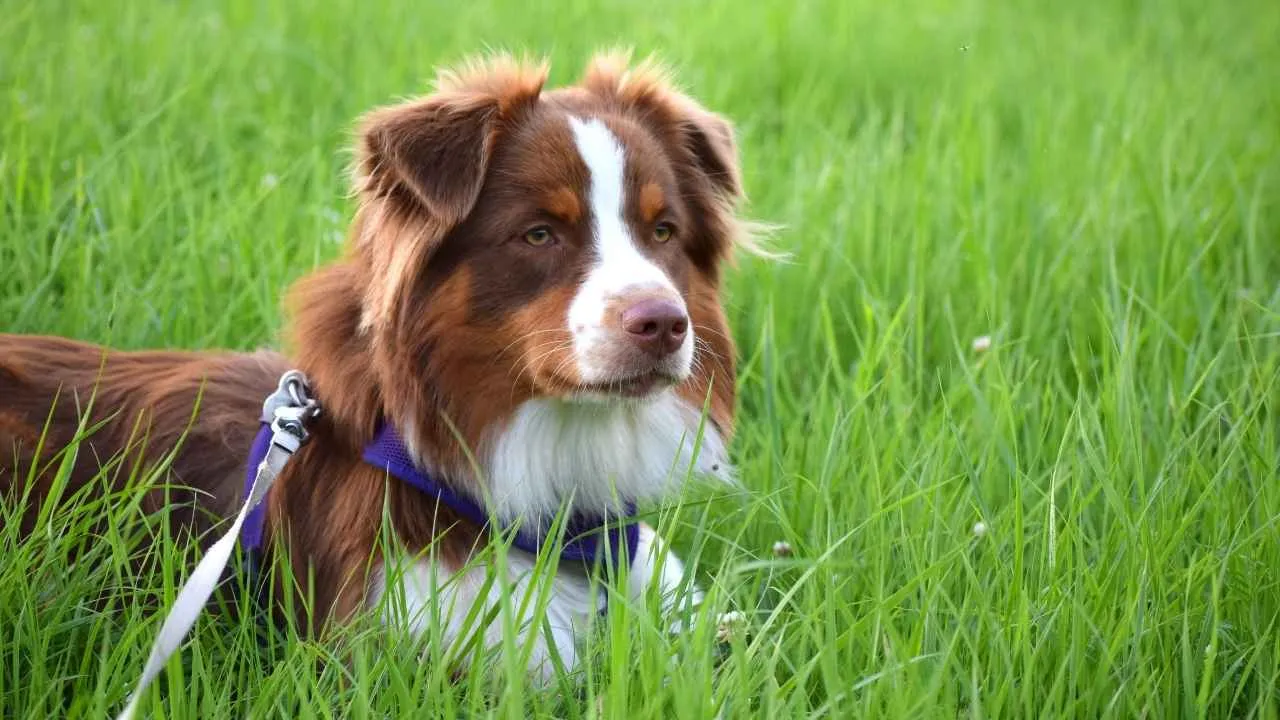
The Australian Shepherd is a breed that wins hearts with its affectionate nature and playful personality. While it may not have a long tail to wag, its entire rear end gets into the action, showcasing its excitement and joy.
Its signature tail wag melts hearts, and its loving gaze makes it hard to resist. This breed is highly intelligent and thrives on interaction and mental stimulation.
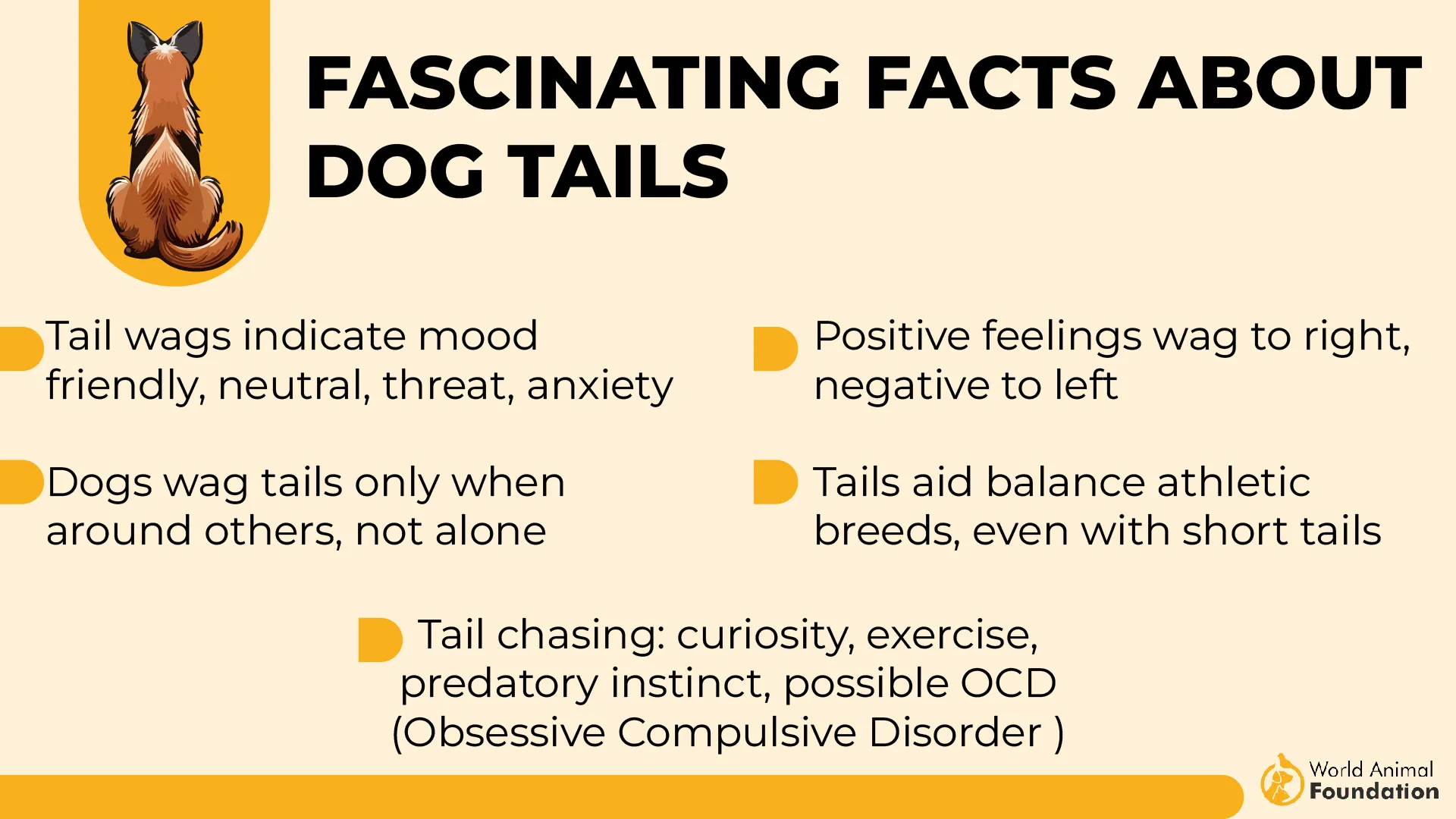
It’s a loyal companion that bonds strongly with its family. With its energetic and playful nature, it requires regular exercise and activities to stay happy and healthy.
The Australian shepherd’s unique blend of intelligence, loyalty, and affection makes it a beloved companion. Its loving nature makes it a pleasure to be around.
7. English Springer Spaniel
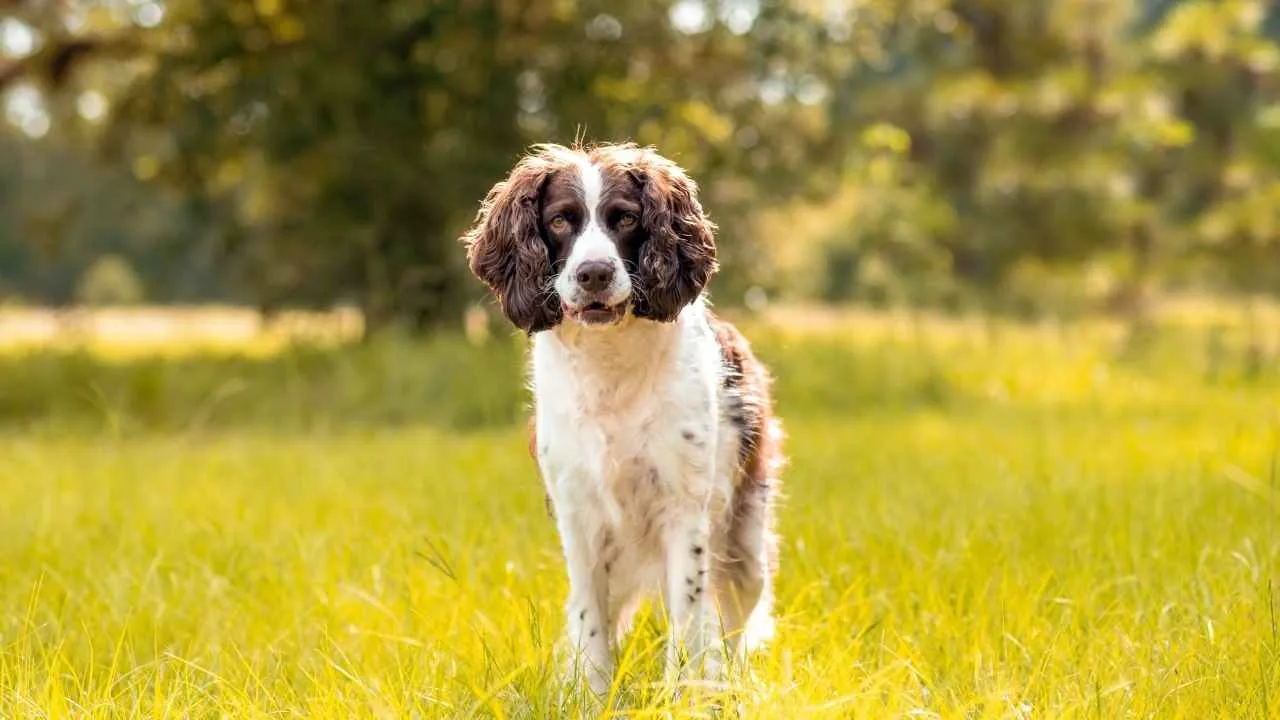
The English Springer Spaniel is a breed that embodies energy and agility. Their tail wags with enthusiasm, reflects their lively nature, and is often a clear indicator of their excitement and happiness.
As they wag their tail, it becomes a happy expression of their emotional state. With their intelligence, loyalty, and affectionate nature, they make wonderful companions.
They’re highly energetic and demand regular exercise to stay happy and healthy. Their beautiful demeanor makes them a delight to be around.
English Springer Spaniels have a medium-length coat that requires regular grooming. They’re built for endurance and agility, making them well-suited for active lifestyles.
With proper care and attention, they thrive as beloved family pets. A springer without enough exercise is like a toddler on a sugar high, and their tails never quit wagging.
Conclusion
In conclusion, understanding canine body language is crucial for building a relationship with our dogs. The speed, movement, and context of a wagging tail convey emotions and intentions, allowing us to respond accordingly.
By recognizing these subtle cues, we can foster deeper connections with our canine companions. This insight enables us to tailor our interactions to their needs, promoting a more harmonious coexistence.
Effective communication is key to a fulfilling human-dog bond, and deciphering tail language is an essential aspect of this process, ultimately enriching our lives together.


